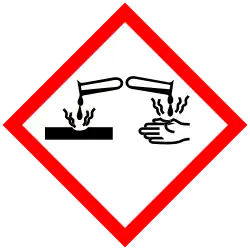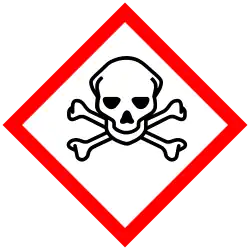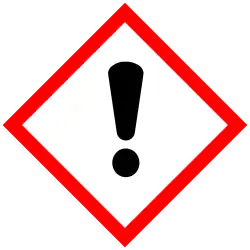Octanoyl chloride
 | |
| Names | |
|---|---|
| Preferred IUPAC name
Octanoyl chloride | |
| Other names
Capryloyl chloride; n-Octanoyl chloride; Caprylic acid chloride
| |
| Identifiers | |
3D model (JSmol)
|
|
| ChEMBL | |
| ChemSpider | |
| ECHA InfoCard | 100.003.538 |
| EC Number |
|
PubChem CID
|
|
| UNII | |
| UN number | 1760 |
CompTox Dashboard (EPA)
|
|
| |
| |
| Properties | |
| C8H15ClO | |
| Molar mass | 162.66 g·mol−1 |
| Hazards | |
| GHS labelling:[1] | |
  
| |
| Danger | |
| H290, H315, H317, H318, H330 | |
| P234, P260, P261, P264, P264+P265, P271, P272, P280, P284, P302+P352, P304+P340, P305+P354+P338, P316, P317, P320, P321, P332+P317, P333+P317, P362+P364, P390, P403+P233, P405, P406, P501 | |
Except where otherwise noted, data are given for materials in their standard state (at 25 °C [77 °F], 100 kPa).
Infobox references
| |
Octanoyl chloride is an eight-carbon acyl chloride with a straight-chain structure that is used as a reagent in organic synthesis.[1][2]
References
- ^ "Octanoyl chloride". Sigma-Aldrich. Retrieved 1 July 2017.
- ^ "Octanoyl Chloride". PubChem. Retrieved 1 July 2017.